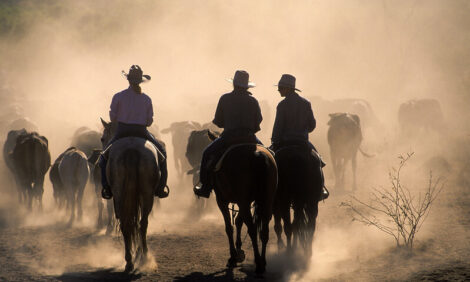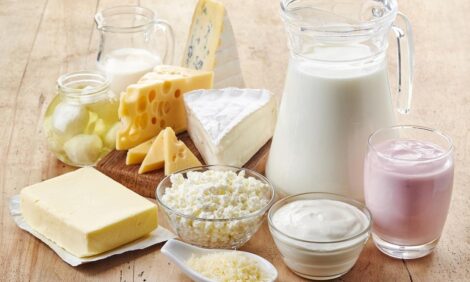



Drought and Weak Dollar Double Australian Cattle Cash
AUSTRALIA – Weather and economics have seen Australian cattle farm incomes double over the last twelve months as farmers have sold more cattle for more money.A weaker Australian dollar has driven live exports higher as a prolonged drought resulted in turn-off rates climbing to a 36 year high.
This was met by a 24 per cent lift in cattle prices,a new government report says.
Northern operations saw cash income average A$74,700 per farm in 2013-14 and then lift to A$148,000, a 50 per cent rise above the ten year average in real terms.
In the south, cash income almost doubled, rising from $38,100 in 2013-14 to 64,000 last year, 35 per cent above the ten year average.
This did not mean farms were profitable, however, according to the Australian Bureau of Agricultural and Resource Economics (ABARES) figures.
Profits remained in the negative although reduced to a quarter, from A$-76,900 in 2013-14 to losses of $-19,000 last year.
Farm debt also increased four per cent.
According to the ABARES survey of beef operations over 100 head, high turn-off rates were balanced by higher live cattle exports.
In total, drought affected 30 per cent of beef farms in 2014-15, slightly more than the previous year and resulted in a nine per cent reduction in cattle numbers where drought struck.
Cattle turn-off, rising nationally since 2012-13, remained around ten per cent higher in the south than the north.
Farm cash incomes were bolstered by live cattle exports, income from which almost doubled from $143,000 in 2013-14 to $277,000 in 2014-15. Many cattle came from outside the key northern export region to enable this.
The report said: “Average farm cash income of all beef cattle producing farms in southern Australia, including mixed enterprise farms, is estimated to have increased from $87 000 a farm in 2013-14 to average $108 000 a farm in 2014-15.
“Farm cash incomes of southern Australian beef cattle producing farms are also dependent on crop receipts and receipts from sheep, lambs and wool. Receipts from crops generally declined in 2014-15.”
Michael Priestley
News Team - Editor
Mainly production and market stories on ruminants sector. Works closely with sustainability consultants at FAI Farms



